Delidding The AMD Ryzen 5 2400G APU: How To Guide and Results
by Gavin Bonshor on May 10, 2018 8:00 AM EST- Posted in
- CPUs
- Guides
- APUs
- Ryzen
- Ryzen 3 2200G
- Ryzen 5 2400G
- Delidding
- Delid
Delidding The AMD Ryzen 5 2400: Delidding The APU
To show if delidding the Ryzen 2000 series APUs yielded much benefit in terms of thermal performance and overclocking headroom, I selected the best overclocking chip for delidding from a CPU core frequency standpoint out of a pool of four APUs. The best one was our retail Ryzen 5 2400G chip, which managed 4.1 GHz with 1.387 volts applied in the BIOS (on our MSI B350I Pro AC motherboard).
Our Ryzen 2000 Series APU Overclocking Guide with results can be found here: link
For delidding, we purchased the Der8auer Delid Die Mate 2 delidding tool, and the Delid Die Mate 2 AMD Kit. This to our knowledge is the safest method to ensure the APU is not damaged during the delidding process and the Delid Die Mate 2 is manufactured from good quality anodized aluminum; much sturdier than a 3D printed acrylic one which relies on the quality of materials used to print. Ensuring the delidding process has minimal risks means a safe delid without damage which is ultimately is much cheaper than a dead piece of silicon, one which cannot be RMA’d due to voiding the warranty outright. The actual procedure for delidding the Ryzen 5 2400G ($169) is exactly identical to the Ryzen 3 2200G ($99) in every single way.
Step 1 – Ensuring the Tools Are Ready for the Job
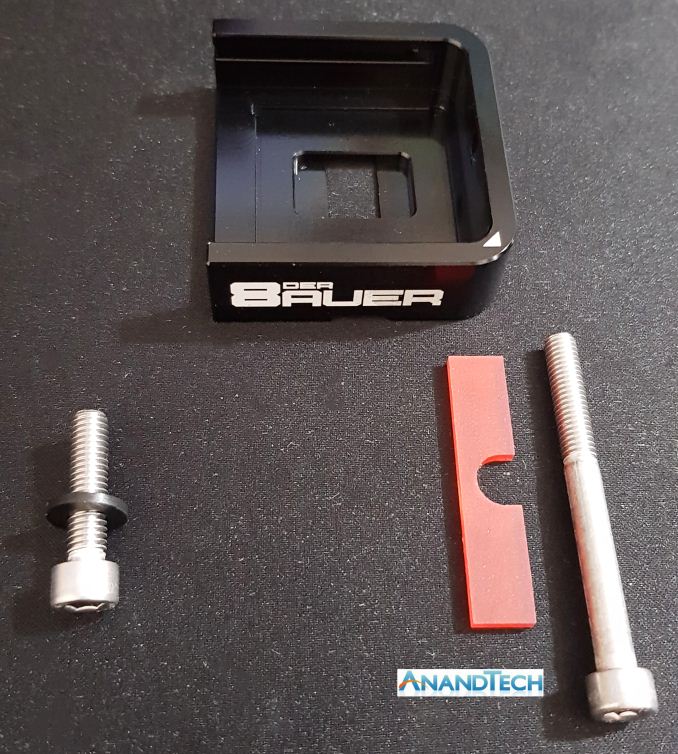
Standard bolt on the left with AMD Kit on the right
The process in removing the IHS from the 2400G die is very simple (using the right tools), although it can be daunting to first timers and non-experienced users. The first step is ensuring the tools contents are correct and there is no present damage to the components; doing this is essential as any imperfections or cracks in the metal could cause the tool to break in operation and could destroy the chip.
Step 2 – Putting the Chip in the Tool
Making sure the chip is placed into the tool the correct way allows the tool can do its job properly; putting a case fan the wrong way around in a chassis wouldn’t give the right thermal dynamics to effectively cool a system, doing the same with a processor in a delidding tool wouldn’t be right either.
The way to make sure the chip is in the correct way is to line up the triangle indicator on the corner of the processor itself with the triangle indicator on the tool, the same way you would when installing a processor into a motherboard.
Step 3 – Assembling the Die Mate 2 with the AMD Kit Correctly
With the Ryzen 3 2200G ($99) or Ryzen 5 2400G ($169) correctly placed in the Delid Die Mate 2 tool, the next step is slotting in the red acrylic adapter at the open end of the tool; the U-shaped groove needs to be facing upwards as this is where the threaded bolt sits to protect it from touching and potentially damaging the pins on the chip.
Step 4 – Slotting in The Delidder
The Der8auer Delid Die Mate 2 as standard comes in three main components, the part that holds the chip, the part that removes the IHS from the chip, and an adjustable clamp to hold the chip in place. The clamp isn’t used when delidding the AMD Ryzen 2000 series APUs due to the chip using pins. Lining up the grooves in the black block of aluminum with that of the other part of the tool is essential and for ease of use, it can only be placed in one particular way.
Step 5 – Inserting the Threaded Bolt from the Delid Die Mate 2 AMD Kit
This is where the included acrylic adapter comes to use to prevent the bolt from hitting any pins and thus avoiding damage. The M6 x 60 mm threaded bolt screw included in the AMD kit is paramount and using the regular one supplied with the tool itself wouldn’t be adequate to delid a Ryzen 2000 series APU. The aim is to secure the bolt into the correctly sized slot on the Delid Die Mate 2 tool so that it’s ready to be used.
Step 6 – The Nitty Gritty: Applying Force and Twisting the Nut
The Delid Die Mate 2 comes included with an Allen key which is required to screw the bolt with enough pressure to ‘pop’ the heat sink off safely. Both the standard supplied bolt and the one with the AMD kit share the same M6 sizing making the key usable on both threaded screws. With the bolt in place and the Ryzen 5 2400G ($169) safely installed into the tool, it’s a case of simply twisting the Allen key until the loud popping sound is heard.
Do not be alarmed however, the crunch or popping sound is rather loud and resembles the same kind of crunch when installing a new Intel processor into a new motherboard, only much, much louder.
Step 7 – Safely Removing the Screw from The Tool
Once the ‘hard’ part has been completed, removing the threaded screw safely is as important as it was installing. When removing the screw, it’s a good idea to angle the screw as in the image and ensure your have two hands available when removing the screw. The best way to achieve this is loosen the bolt by using the Allen key until it’s loose enough to screw by hands. The consequence of losing grip on the bolt while removing it could result in pin damage don’t want the end of the screw to scrape or even touch the pins.
Step 8 – Checking the Delid Was Successful
If all the steps have been followed correctly, the result should be a clear one, a freshly delidded Ryzen 3 2200G or Ryzen 5 2400G APU. With the aluminum Die Mate 2 block removed and the adapter, the chip itself should be loose from the IHS and should be ambulatory.
Now that the Ryzen 5 2400G has been successfully delidded without any damage, it’s now time to prepare it for use on the test bench to see what/if there are any thermal benefits, as well as available overclocking headroom as a result of this process.



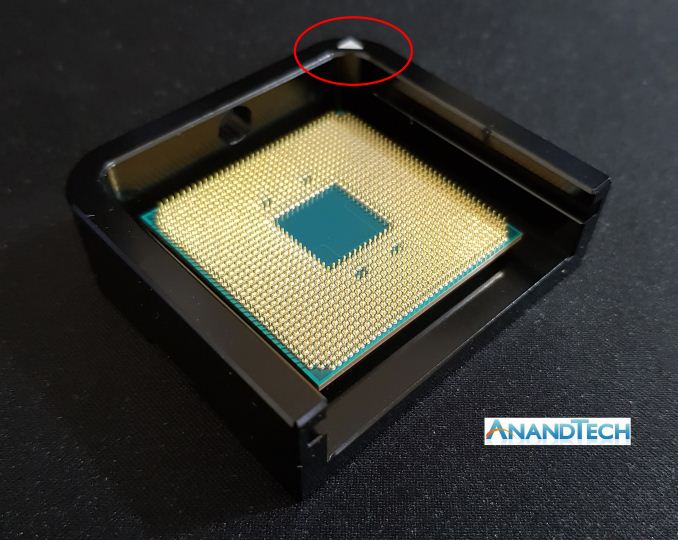
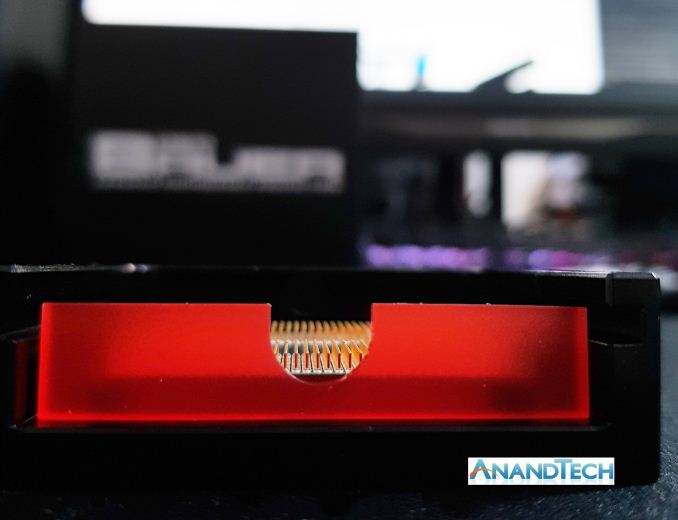
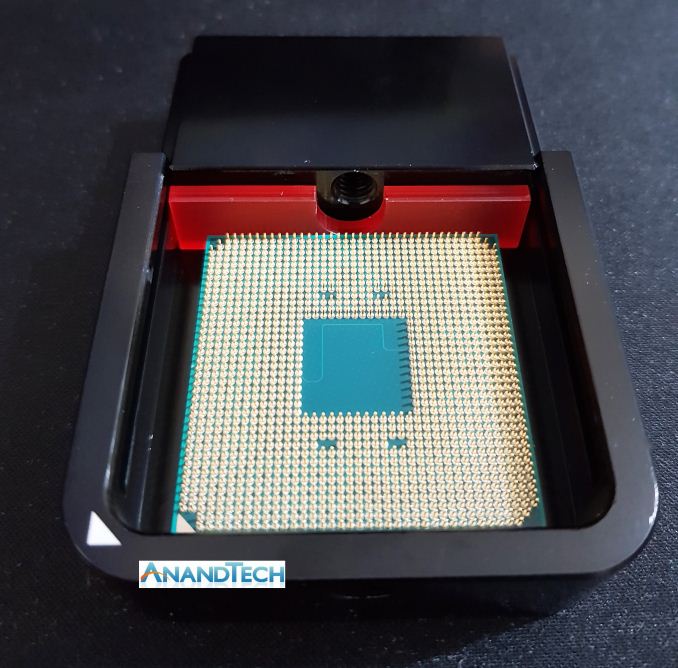
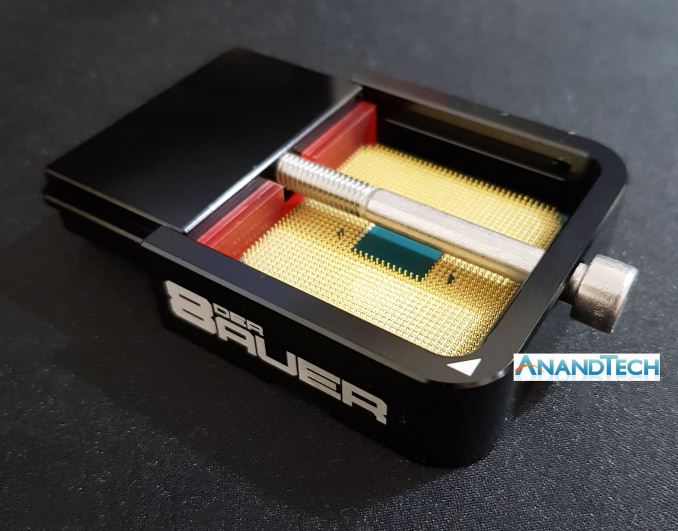
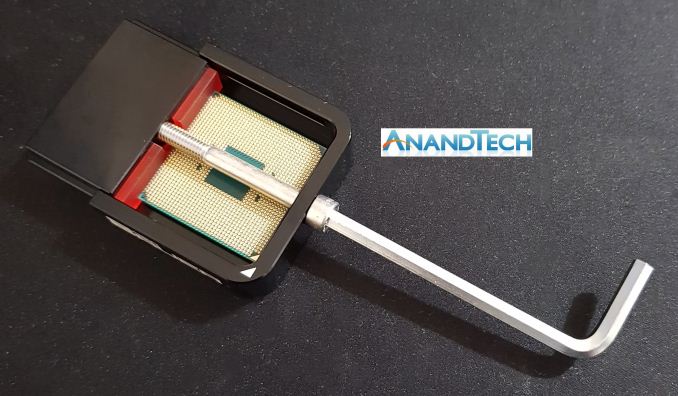
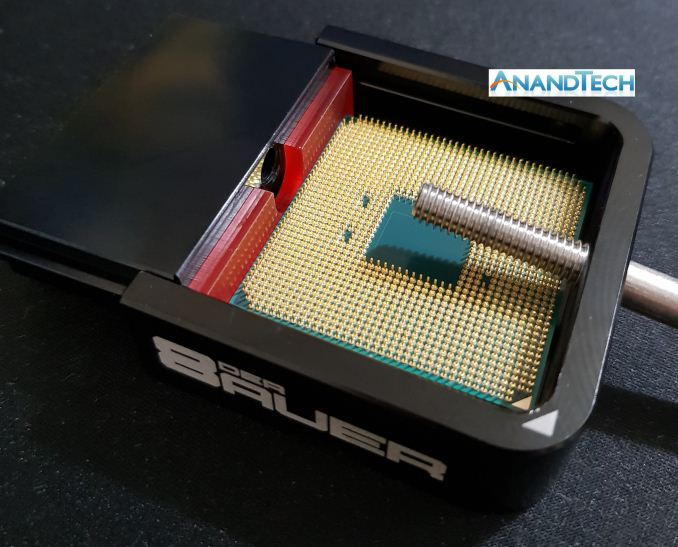
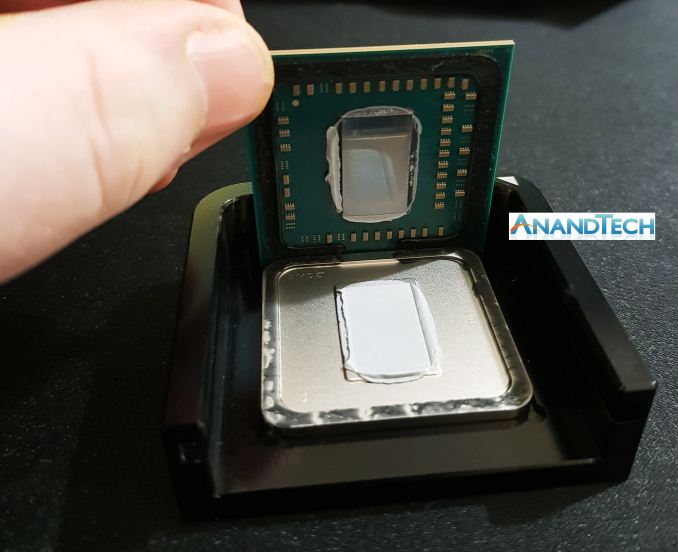








73 Comments
View All Comments
MDD1963 - Thursday, May 10, 2018 - link
100 more MHz! Great Scott...!!!!!!!!!!!!!!!!! :/PeachNCream - Friday, May 11, 2018 - link
Yeah, it does seem like a lot of effort and cost for a minimal reward. In fact, taking the results at face value -- the CPU was already operating at a reasonable temperature under load and the performance increase was insignificant given the risks. However, there's more to this effort that we haven't seen yet like the upcoming iGPU results. I'm curious about what's to come.I would like to see fewer silly screen names on products though. It's hard to take a name like Der8auer with a glaringly obtuse number in it very seriously. When I was a teenager, I remember seeing children calling themselves "sk8ters" and I thought it was stupid back then. It looks even more ridiculous now that I'm getting older. Maybe someday there'll be another segment of the PC hardware market that forks off the LED and screen name festooned man-child branch that is understated yet still premium.
AntonErtl - Thursday, May 10, 2018 - link
Nice Article, thanks.About relidding: You already reduce the clearance by removing the glue. Ok, so you need a naked-die-mount if you leave the heat spreader away, but why not go all the way when you already went this far? And it would eliminate the worry that the heat spreader is inadvertently moved in a bad way.
Maybe stuff for a future article? How are temperatures affected by naked-die-mounting relative to relidding?
sor - Thursday, May 10, 2018 - link
Yeah I was wondering about that as well. It used to be the norm from factory. I’m sure it’s common knowledge among enthusiasts who do this sort of thing regularly.vext - Friday, May 11, 2018 - link
The included Ryzen mounting system uses springs, which have a spring rate. If you remove the spreader, you change the CPU stack height, and lower the clamping force. So you have to somehow modify the mount, with heavier springs or shims behind the springs, or install a shim to increase the CPU stack height again.Other mounting systems have their own issues, which may be easier to modify.
sor - Friday, May 11, 2018 - link
I’m not convinced. I’d be more willing to believe that maybe it causes the heat sink to not clear a motherboard or socket component. There’s a decent amount of pressure on that heatsink clip and I doubt it’s going to notice such a small variance.sor - Friday, May 11, 2018 - link
Also, given the complexity of this mod it seems strange that a spring loading issue would stop you from getting the lid out of the way. If that were a problem, after all the trouble of delidding and using special paste surely they’d be able to figure out how to slide a toothpick under the spring clip.boozed - Thursday, May 10, 2018 - link
A hammer and a bad habit you say?sonny73n - Thursday, May 10, 2018 - link
Why did you have the lid back on after going thru troubles of delidding?sor - Thursday, May 10, 2018 - link
I remember all the old Athlons (e.g. the venerable “Barton” core) basically came delidded in the retail box and your heat sink went straight on top. I can understand why AMD and Intel started putting lids on, but it seems weird to me that one would go to the trouble to delid and then put the lid back on. Certainly heatsinks scan still be screwed down to make up the difference in thickness. Is it because these sockets don’t balance pressure across the die as well?